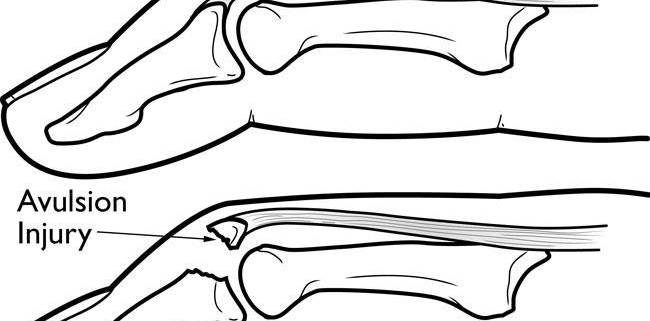Mallet Finger Injuries

Overview: Mallet Finger Injuries
Mallet finger, also known as baseball finger, is a type of injury that occurs when the tendon responsible for straightening your finger becomes damaged. This leads to the patient being unable to completely extend their finger. In some aspects of daily life, small bursts of force exerted on the fingers are usually overlooked, but when such forces result in mallet finger injuries, the severity of the situation sets in, highlighting the importance of our finger joints for fluidity in movement.
Types: Differentiating Mallet Finger Injuries
Mallet finger injuries can be classified as either a non-displaced or displaced injury.
– Non-displaced Injury: This type of mallet finger injury involves relatively minor damage to the tendon, with no significant bone displacement.
– Displaced Injury: This is a more severe form of mallet finger injury, in which the tendon damage is accompanied by a displacement of bone fragments.
The type of mallet finger injury you have will influence your treatment options, which is why it’s essential for the injury to be correctly classified.
Causes: What Leads to Mallet Finger Injuries?
Most mallet finger injuries occur from a sudden blow to the extended finger. This is often the result of sporting accidents like catching a ball poorly or forcefully, or when a book falls onto an extended finger. It can also occur with seemingly harmless activities like tucking in a sheet while making a bed.
Symptoms: Identifying Mallet Finger Injuries
The common symptoms associated with mallet finger injuries include:
– Inability to fully straighten the affected finger
– Redness, swelling, and pain
– A lump can be seen over the back of the last joint of the finger
A less common, but still possible symptom is a slight loss of sensation or numbness in the affected finger.
Diagnosis: How Mallet Finger Injuries are Identified
A healthcare professional will usually diagnose a mallet finger injury through a physical exam and by asking about the incident that caused the injury. An X-ray may be necessary to confirm the diagnosis and determine the severity of the injury by checking if the bone is displaced.
Treatment Options: Managing Mallet Finger Injuries
Treatment options typically depend on the severity and type of the mallet finger injury. For non-displaced injuries, conservative approaches like using a finger splint (usually for 6-8 weeks) to keep the finger extended and allow the tendon to heal, combined with anti-inflammatory medication, may be sufficient.
In more severe, displaced injuries, surgical intervention may deem necessary. This usually involves realigning and fixing the displaced bone fragments.
Living With Mallet Finger Injuries
Living with a mallet finger injury involves some lifestyle adaptations like learning to perform daily activities using the non-injured hand or using assistive devices to support the injured hand. It’s also vital to consistently follow prescribed medication schedules to manage inflammation and pain. Stay in frequent communication with your medical provider about the healing progress.
When to Seek Help
Seek immediate medical attention if the pain, swelling, or redness worsens, or if you develop a fever, as these may be signs of an infection. Also, if you’re unable to move the affected finger or if there’s persistent numbness in the finger, seek help right away. It’s important not to delay seeking help for a suspected mallet finger injury, as early intervention can significantly improve recovery results.
